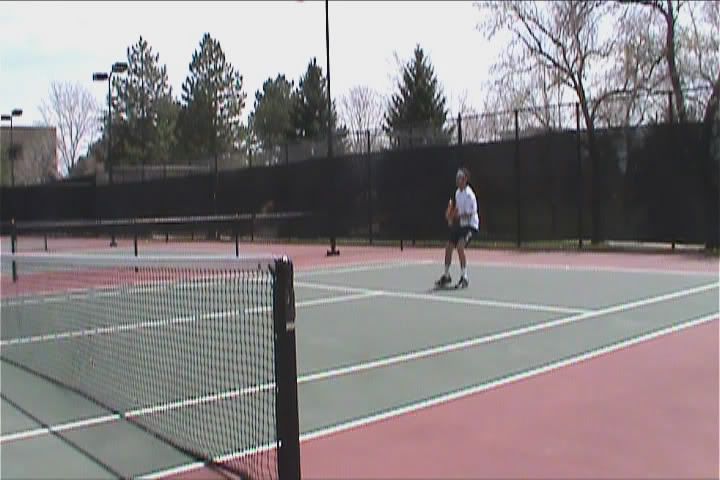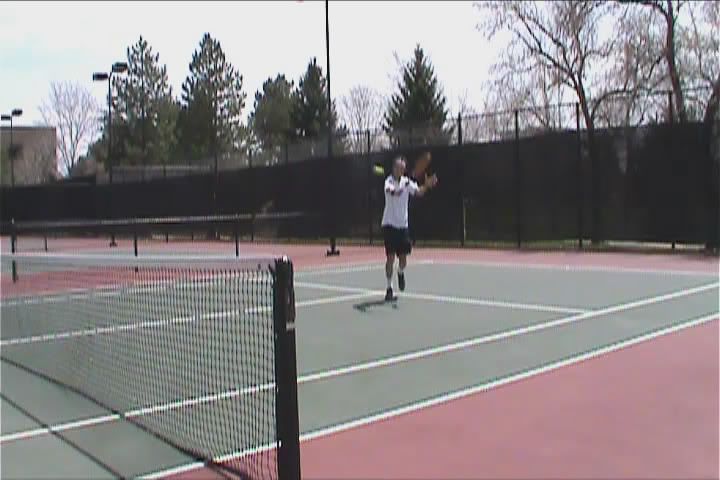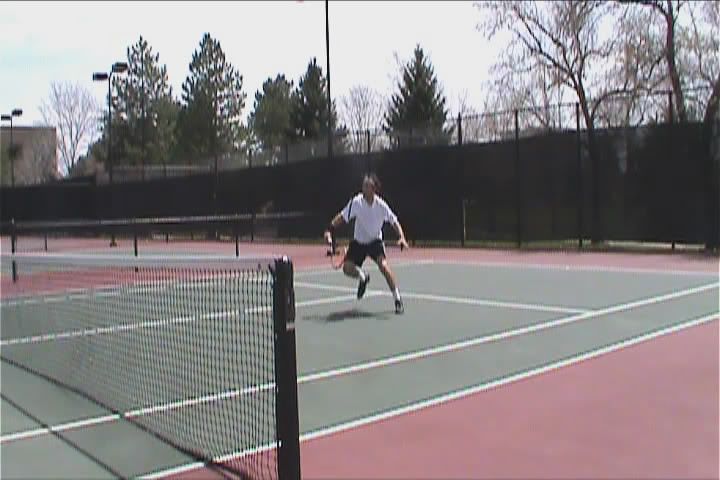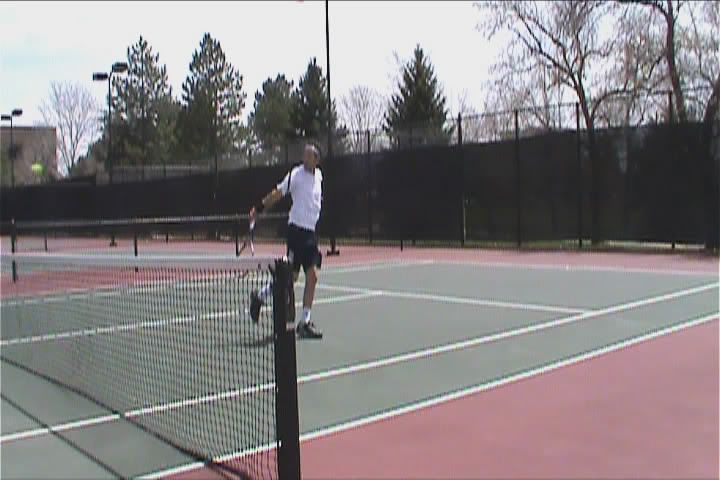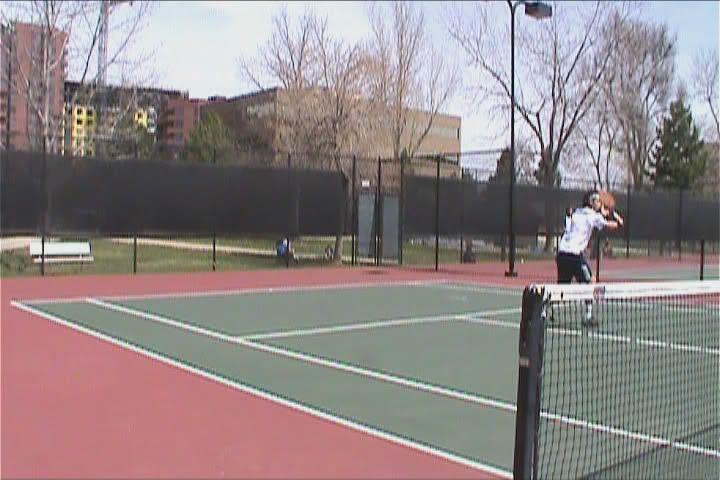3.0?
http://vimeo.com/7089962
I've been working with a coach 2-3 times a week, and feel I'm making some progressions. My serve still seems shoddy at best.
My forehand feels more natural, and I'm able to handle more powerful backhands.
What do you think? Any advice is appreciated.
Well... Here are my impressions after the first 3 games (might go further into the video later, but seeing as you left in all the idle moments instead of editing them out, watching it is a bore half the time):
-Snaps wrist on serve
-Poor footwork
-No split step
-Horrible positioning at net
-Short follow through on the forehand
-Snaps at forehand
-Snaps at volleys
-Does not watch ball
What does this essentially equate to? Well... Your court coverage is maybe the immediate 2 steps to either side and you lack solid technique and therefor consistency and power.
Now here are some of the good things:
-You can take the ball on the rise pretty well (which makes me wonder why you missed the half volley right after)
-You can still get decent power on that forehand and serve
-You have guts
So let's go over the negatives again.
-Wrist snap
Snapping the wrist on the serve shouldn't happen. It doesn't give you power or even consistency. It takes BOTH away. When you start out, you THINK it does because your ability to play with power and consistency is nonexistent to begin with. I want you to focus on loosening up that arm and focus on swinging that racket through the ball towards your target.
I also want you to take a look at this video and apply it to your serve.
http://www.youtube.com/watch?v=c06ToXPyJYA
There is NO wrist snap on the serve. This is ABSOLUTE. Take a look at slow motion footage of pro serves and realize it is a rotation of the forearm and wrist called pronation that gets the racket through contact. This video will help you generate easy racket head acceleration.
-Poor footwork + No split step
First of all, I want you doing a split step more than anything else. I don't care if your footwork stays as bad as it is, start using split steps! It will improve your reaction time and court coverage. Get slightly off the court and land on the balls of your feet while putting them slightly wider than shoulder width apart with bent knees. And do it as your opponent makes contact with the ball so that when you land, you will move right away to where you need to be. This will add a step or two to your court coverage, cause you're wasting almost a whole second doing nothing after they hit the ball.
Develop an athletic foundation (bend your knees, keep feet slightly wider than shoulder width apart, lower height and center of gravity by 6 inches). I want you to stay low on EVERY shot you hit, and move so that you can hit the ball in your strike zone. Try to contact the ball around hip or stomach level and stay low throughout the shot. You don't have a problem like most people of popping up during the swing, but it's good to mention and notice anyway.
-Horrible positioning at the net
You want to be INSIDE the service line. No sane player should be playing the net from BEHIND the service line. It's crazy. It's okay to hit your first volley from there (though you sit there for about a second waiting for them to give you a ball to volley, so use that second to take a step or two forward please) but you want to be as close to the net as possible on every volley you hit so you have more angles to use and your chance of making an error diminishes. You move in, split step, move to the ball, hit it, and repeat.
-Snaps at volleys
A volley should have no wrist action. With your racket, all you need to do is get the strings on the ball to get a good response out of the racket. The power comes from the body (and the short punch stroke). You move through your volley and keep the contact out in front. Keep a firm wrist and don't let the racket head drop below the wrist. On slower balls, give it a short bunt forward (but with a bit more force and intention) to where you want it to go, but keep to the same basic principles I mention above.
-Short follow through on forehand + snaps at forehand
Get the racket below the ball, hit up and through it with a closed face, and finish over the shoulder. Keep the wrist firm and accelerate the racket. That's all there is to it.
-Does not watch ball
Self explanatory, no?
Overall, if you improved your footwork and your serve, I think you could go up at least half a level or a whole level. Movement and footwork can easily cover up for most technical deficiencies and is the foundation of being able to play high level tennis.


